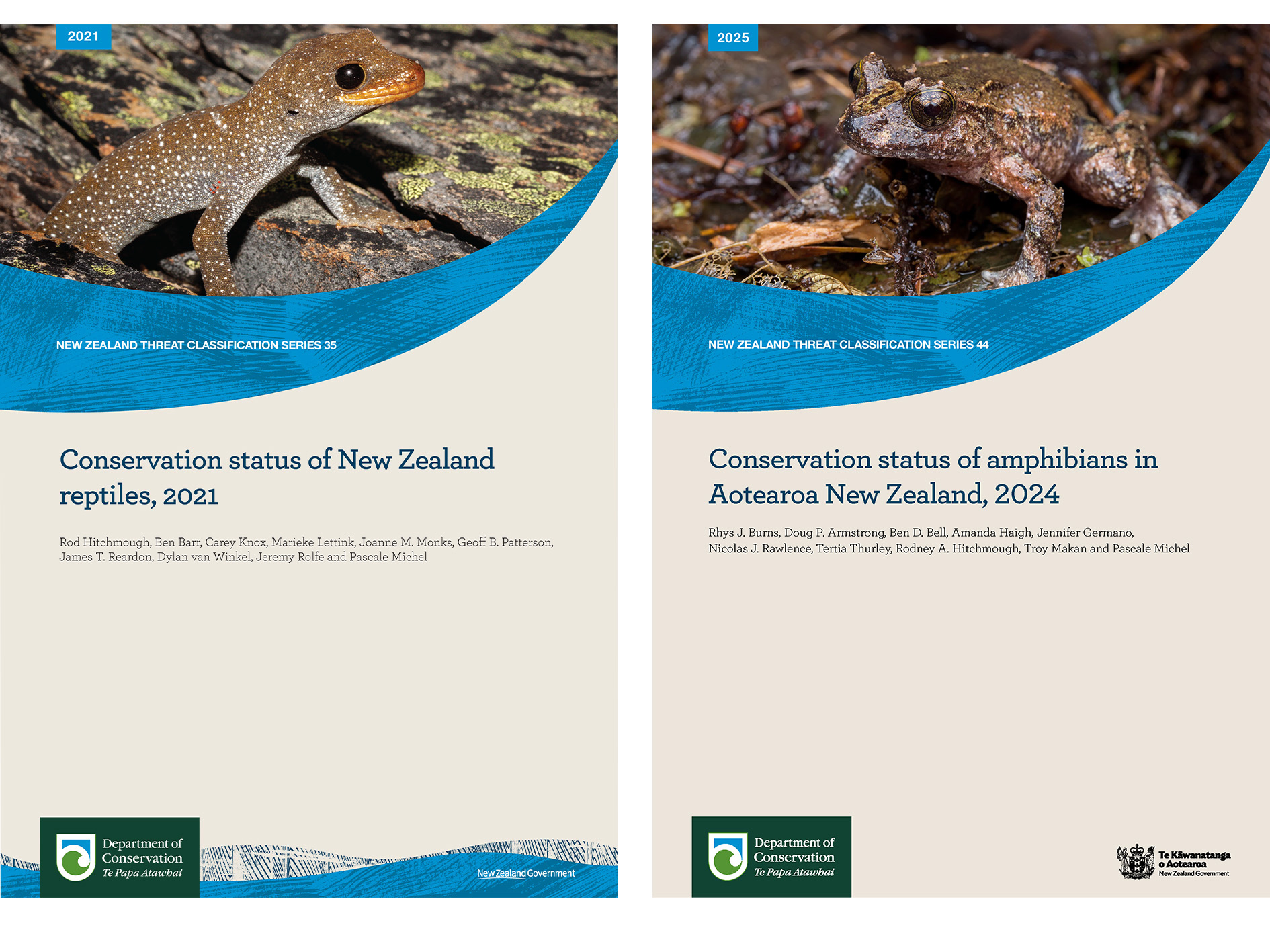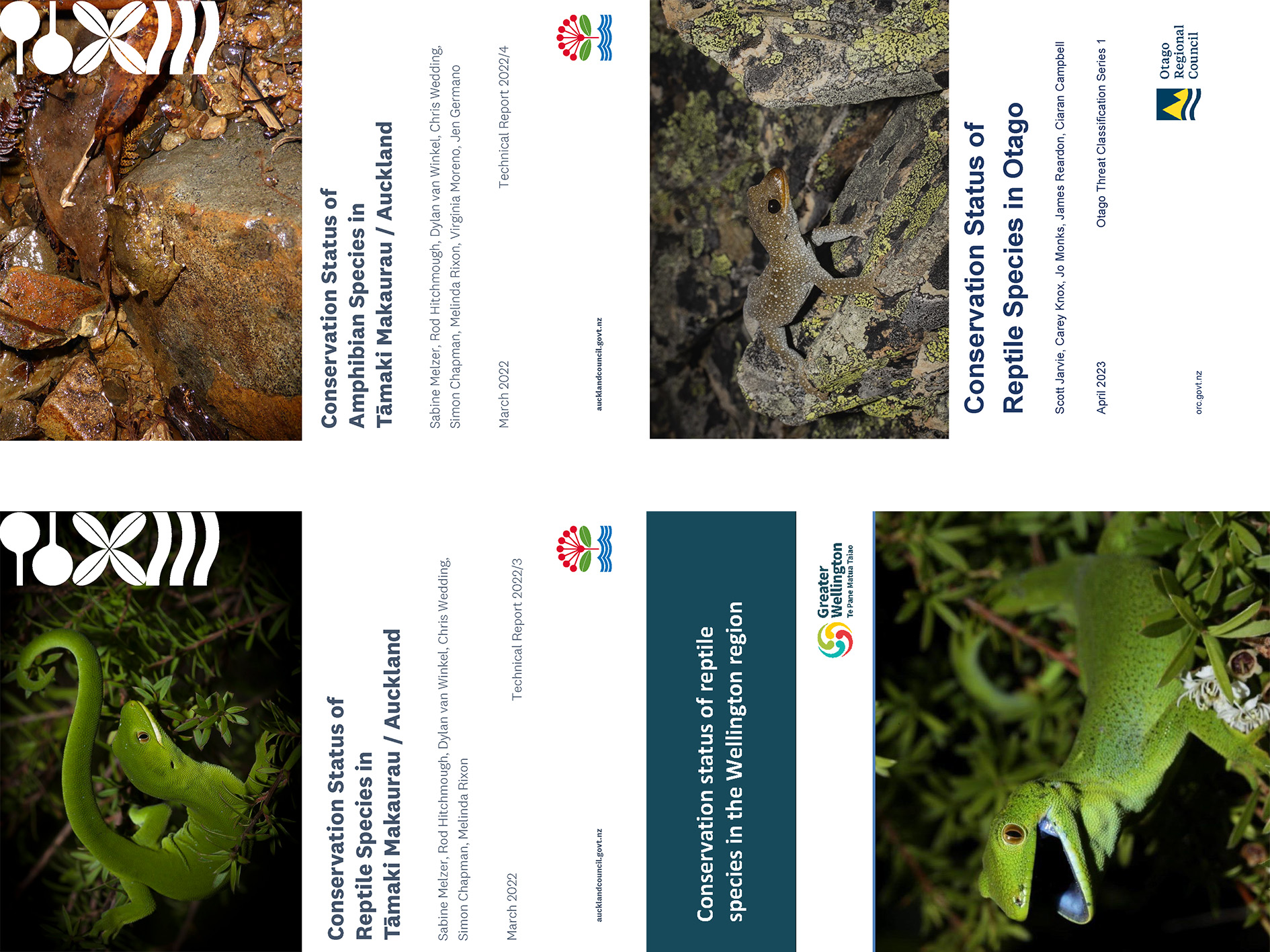What makes New Zealand's herpetofauna so special?
New Zealand hosts a diverse array of herpetofauna, including the primitive frog family Leiopelmatidae, the tuatara, and over 110 species of lizards (geckos and skinks), which are found no-where else in the world. Our native herpetofauna are unique for a number of reasons: they inhabit almost all terrestrial environments and show an extraordinary level of adaptation to cold climates; they exhibit extreme longevity, as well as long gestation periods and slow growth rates; and all but one of our native lizards give birth to live young (rather than laying eggs).
What is the conservation status of our native herpetofauna?
Unfortunately, the unique evolutionary history of NZ and the equally unique features of our native herpetofauna are what have left many species particularly vulnerable to predation by introduced mammals and the environmental change caused by humans.
At present 29% of New Zealand’s reptile species are classified as threatened, with another 45% identified as being at risk. Sadly, tuatara and 37% of our endemic lizard species are now relegated to offshore islands. The greatest threats to New Zealand’s native herpetofauna continue to be habitat destruction and predation by introduced mammalian predators.
The New Zealand Department of Conservation and several Regional Councils across Aotearoa have published threat classification documents highlighting the plight of our endemic herpetofauna at both a national and regional scale. Links to these documents can be found at the bottom of this page:


